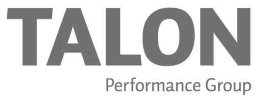There is heightened awareness of talent being the most important asset of a business. We are in a time where leadership knows that without strong, qualified, skilled people, the business can’t function. Yet, a recent gallup survey revealed nationally, businesses lost $11 billion annually as a direct result of talent turnover. This same study cited that executives estimate 65% of their top talent will turnover in the next five years and that only 29% of their entire workforce is engaged. In addition to surveys like this, academics and consultants are emphasizing concern around the high attrition of retiring baby boomers and the impending labor shortage, the low unemployment rates and the stiff competition amongst companies to recruit the same limited numbers of top talent. Is it any wonder that the number one business issue cited for the next five years is improving talent management?
While it is true that we will be experiencing a high number of retiring baby boomers, a smaller work force and attrition of talent remains extremely costly to a business, we are also entering a time of opportunity. Opportunity will be seized by those businesses that intentionally do two things
1) Challenge the notion that every vacant seat by a baby boomer will need to be refilled, that every company is looking for the same top talent, and that attrition is bad for business and
2) Create and implement an effective and reliable Talent Strategy; a workable plan to attract, select, onboard, engage, develop and retain talent.
How does a business challenge the norm and take advantage of opportunity?
Step 1. Realign vision, mission, values to people and systems.
If leaders look with fresh eyes at their business today and to their future plan, they might see the the setup, the communication needed, the systems and the people might be different in the future to keep living the vision. Instead of just doing things the way they have always been done or have evolved over time, intentionally create a start over on paper; does the vision and mission still make sense, is it clearly communicated, do we have too many positions, are the responsibilities and expectations clear. All of these questions are opportunities to thoughtfully evolve your business to meet its future.
By starting now, a reformed organizational chart, workflow processes and communication systems can be retooled and shifted gradually as people retire or vacate positions. For example, the use of technology, key performance indicators, and clear expectations might allow a business focused on work/life balance to focus on creating integrated lives for employees. Maybe there is an opportunity to relook at walls and work hours when it comes to function, performance and employee success.
Step 2. The Fear of a Talent Shortage.
The right talent or the definition of top talent is different in every organization. Every business should not be going after the same people. Just as every business has a vision, mission and value system so does each person. One person who is a fit in one organization does not automatically mean they will be a success in another. To take advantage of opportunity, a business should think about their vision, mission and values; clearly identify the function and expectations around the role they are filling and then hire someone that connects with that organizational foundation – this is culture fitting.
Step 3. Some attrition, despite the cost, is healthy and good for a business.
The heathy evolution of every business depends on some people outgrowing the company or role. Or the role demands outgrowing the person. It is the natural way. Just like a fire in a forest is healthy and needed to promote new lush growth. The more attentive and better planning leaders are, the more the natural transition of talent with the pace of the business can occur. Evaluating the right person for the right seat at the right time is a continual part of any successful business planning process.
Step 4. Talent Strategy.
Top Talent has a choice and they know it. So, what makes one company better than another? How can you be sure to attract top talent so you can even choose the one(s) you want to hire? The answer to this question is talent strategy and management. It starts with how well a business knows itself.
- Understand yourself
- Think creatively
- Compelling Story
Acknowledge, define a talent life cycle. Know who is in your company and set a plan to develop everybody. Not in the same way but a way appropriate to the function and the individual. Identify early on high potential talent and start fully developing them as part of the business succession planning system.
The practice of focusing on strengthening the internal culture and development of talent will immediately begin to strengthen your external brand, client relationships, production and sales.
Leaders of entrepreneurial organizations have the ability to put your head down, plow forward and just get it done. Historically, that has worked okay. If you haven’t noticed already, it won’t keep working the same way as talent underneath the leadership won’t have the same charging force. Like a wild turkey stretching its neck up above the brush to see what is around and cast vision on the next steps for an efficient and safe path, so too are our leaders called forth to lift their heads, and proclaim the next steps and develop others to lead on the path to the future.
Clearly, businesses need to take action to attract the right people, retain their top employees and engage their workforce. No matter what the size of the organization, the costs are just too great not to address the market changes around talent.
